
“It took me years and years to unravel the sabotage [of manufactured homes and factory-built housing] I have found,” says the new research presentation provided to MHProNews shown below. There is “Absolutely no way I could have done so without the help of those in [the] construction industry producing factory homes,” it went on to say. A source with knowledge said there is implicit thanks to this writer for MHProNews, along with other researchers and professionals involved in MHVille for the insights that continue fueling research. That research helps explain the manufactured home and modular housing industry’s 21st century underperformance. Among those breaking ground on such research and presentations are those associated with the Minneapolis Federal Reserve, though the researchers stress that their thoughts are their own and that they aren’t speaking for their branch of the Fed. That noted, MHProNews has for years been virtually the sole professional trade media providing readers with periodic reports on the growing body of evidence from voices across the left-center-right divide raising alarms about the problems caused by monopolization, the harms done to consumers, entrepreneurs, and smaller businesses. What follows provides an implicit three-part solution or possible cure for what ails manufactured housing today.
Beyond MHLivingNews/MHProNews, names that have periodically shed light on these issues include leaders from the Manufactured Housing Association for Regulatory Reform (MHARR), Samuel “Sam” Strommen with Knudson Law, plus James A. “Jim” Schmitz Jr. and his research colleagues. They have each in their own unique ways provided clear and consistent evidence of purported foul play that fits the definition of “sabotaging monopoly” tactics.
The presentation below by Schmitz was made at the University of Minnesota. It will be followed by our MHProNews Sunday weekly headlines in review, plus our trademark postscript, which doesn’t always directly relate to the featured topic.
Note that the Schmitz PowerPoint presentation is linked here. The text that follows is from that presentation and public address on this crucial aspect of the affordable housing crisis. There are visuals found below. So, the text and illustrations that follow and the Schmitz PowerPoint mirror each other. With that preface, here is the text and illustrations from his October 2022 PowerPoint.
Solving the housing crisis will require fighting
monopolies in construction
James A. Schmitz, Jr.
Federal Reserve Bank of Minneapolis
The views expressed herein are mine and not necessarily those of the Federal Reserve Bank of Minneapolis or the Federal Reserve System
Motivation
Outline
(Large part of) Most housing problems are due to high prices
- Large group paying 50% + on housing
- Evictions
- Homelessness
- I focus on problems of low/middle income but …3
High prices largely due to failure to adopt new technology
Construction has mostly failed to adopt factory methods
- Factory replaces craft in autos, clothes,…
- Factory methods much more productive than craft (imagine making autos in driveways)
- Yet vast majority of homes not factory-made5
Failure to adopt factory methods leads to
- Significantly higher construction costs
- Higher land prices (by influencing WHERE people live)
- Mention decompositions6
Why has construction failed to adopt? Monopolies have blocked factory technology in construction for last 100 years
Solving the housing crisis will require fighting
monopolies in construction
Outline
- How to define monopoly?
- Our forebears decried technology laggardness of construction and the sabotage of technology by monopolies
- Monopoly sabotage of factory production,
- 1960s/1970s (MANUFACTURED HOMES)
- What can we do today?
> Research, Policy, Education
Monopolies need to be defined
> I’m not using today’s definition:
“A monopoly is a firm that is sole seller of product with no close substitutes”
- Obviously, no firm today in housing construction satisfies this definition.
My research with colleagues has found
- Many organizations can be monopolies (trade associations, professional associations, …)
- Monopolies take many actions besides choice of price, like killing substitutes (e.g., factory-built homes)
- Housing industry is only one of many…
Defining monopoly as Thurman Arnold did
- What we have found our forebears knew long ago
- We should define monopoly as they did
- See my paper “How should we define monopoly?”
Thurman Arnold’s definition
>For Arnold, an organization is a monopoly if it …
1.”Prevent[s] new enterprise from entering the field.”
2.”Seeks to consolidate .. [its] power by destroying existing independent enterprise.”
3.”Having accomplished these objectives, they restrict production and raise prices;” and MORE
> Note-1: Definitions are abstractions based on his experiences (e.g., fighting for factory-homes)
> Note-2: Monopoly choice of price secondary concern
Forebears decry laggardness
> “we have the anachronism that the oldest and one of the largest of our industries, concerned with the production of one of the three essentials of life, is highly resistant to progress, follows practices developed in the days of handwork, […] is unable to benefit by advancing productive techniques in other fields. […] Unlike other widely used commodities, shelter is not made in a factory or plant organized for its production” (A.C. Shire, 1937, the chief engineer of the Federal Housing Administration)
There have been some advances since WW2
> Levitt-style mass production methods
- These lead to great savings (in areas where 100 houses can be simultaneously constructed)
- But savings don’t compare to factory production. They are not “enough”
For decent, affordable homes for low income, must produce in factory
- “The labor time in a factory-built dwelling unit is only a fraction of what is required to construct a similar unit on-site. That’s why we must look at factory-built housing. That’s why factory-built housing must succeed, or we will never be able to produce the homes and apartments needed to house our expanding population and our underprivileged citizens in a comfortable, dignified, decent way” (Levitt and Sons, United States Senate 1969, 16)
What Levitt and Sons said was widely understood
- Conceptually even worse now
- Manufacturing productivity grows at around 3.5% per year, construction at little more than 0.5%.
Forebears decry sabotage of factory-technology
Forebears decry sabotage of factory-technology
Arnold’s experience at DOJ
“A first step in the protection of the prefabricator was taken in September 1940 by an indictment which charges a conspiracy to prevent the sale of prefabricated houses in Belleville, Illinois. Local building materials dealers, contractors, officials of the carpenters’ and building laborers’ union, and the chief of police are charged with a series of efforts to prevent the erection of a prefabricated house by concerted refusals to perform the work and by violence to prevent others from performing it. Before the indictment there had been repeated riots at the construction site; thereafter the work proceeded without further violence.”
Note the lineup of monopolies above
Arnold’s experience after
- “Why can’t we have houses like Fords [i.e., automobiles]? For a long time, we have been hearing about mass production of marvelously efficient postwar dream houses, all manufactured in one place and distributed like Fords. Yet nothing is happening. The low-cost mass production house has bogged down. Why? The answer is this: When Henry Ford went into the automobile business, he had only one organization to fight [an organization with a patent] . . . But when a Henry Ford of housing tries to get into the market with a dream house for the future, he doesn’t find just one organization blocking him. Lined up against him are a staggering series of restraints and private protective tariffs.” (Why We Have a Housing Mess, 1947)
Summary thus far
- Our forebears understood factory-built housing must succeed to serve “our underprivileged citizens in a comfortable, dignified, decent way”.
- Our forebears (certainly including the Levitts) understood monopolies were stopping that from happening.
Nothing has changed except
- Everything our forebears knew about need for factory home production, and monopoly sabotage, is forgotten. Monopoly sabotage of factory home production, 1960s/1970s
Outline
3.1 Definitions / Time Series
3.2 Who is in monopoly?
3.3 How was sabotage achieved?
3.4 What are the social costs from monopoly?
Acknowledgement of forebears making manufactured homes
- Monopolies are infinitely complex (Frank Knight).
- It took me years and years to unravel the sabotage I have found.
- Absolutely no way I could have done so without the help of those in construction industry producing factory homes.

monopolies in construction” – James A. “Jim” Schmitz, Jr. with the Minneapolis Federal Reserve.
[MHProNews Editor’s Note: Schmitz’s presentation describes HUD Code manufactured homes as ‘small modular homes’ that are built on a chassis that are not removed. In one sense, manufactured homes are built in what could be described as ‘modules’ or ‘sections.’ His presentation makes clear that what he calls ‘small modulars’ = “manufactured homes” which conform to “HUD [Code] legislation.” That said, it would arguably be preferable if Schmitz and his colleagues followed at each turn the same definitions that the manufactured and modular housing industries use. Modular homes are built in a production center or factory to the same standards as conventional ‘site built’ or ‘stick built’ housing in a given state and/or market. Manufactured homes, as Schmitz correctly observed, are built in a factory to the national (federal) standards of the HUD Code for manufactured housing.] Note 2: depending on your browser or device, many images in this report can be clicked to expand. Click the image and follow the prompts. For instance. Click the image above and a prompt may offer the option to open the image in a new window. Click that option. Then, click the image again to see the image in a larger or full size. Then, to return to this page, use your back key, escape or follow the prompts.




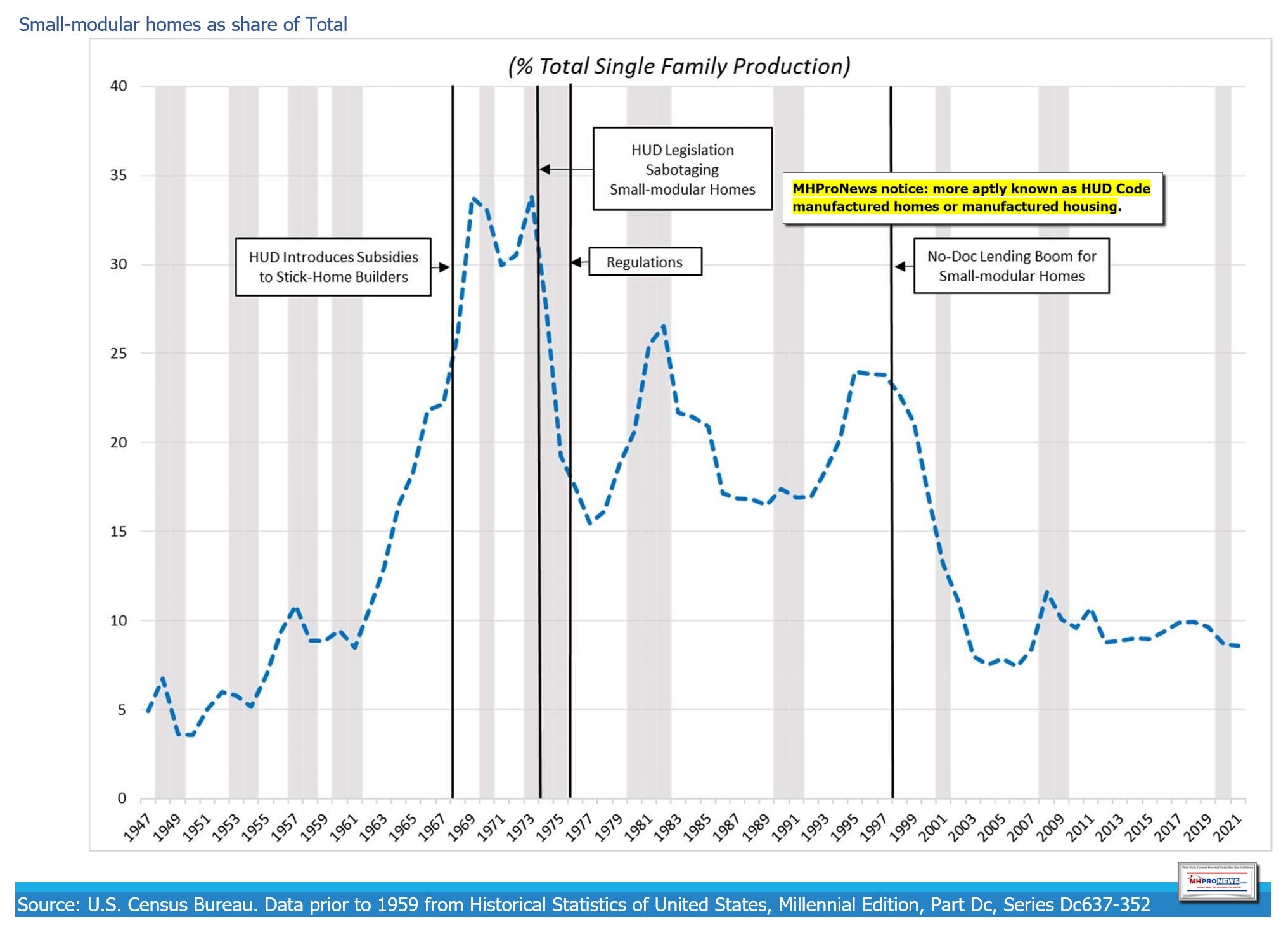
Who is in the monopoly?
Vast majority of economists say construction is competitive
> How is it possible for there to be monopolies in residential construction when profits are small, prices are close to marginal cost, there is free entry, …
> There is competition between stick builders.
> But stick builders form powerful monopolies, block factory technology. Residential construction is not competitive.
Who is in monopoly?
We’ve already been introduced to some of them by Thurman Arnold.
> Will introduce sabotage more as I describe the
Preliminary history (1930s)
> During the Great Depression, desperate families moved around the country seeking work.
> Many pulled very primitive shelters behind their cars. No sanitation facilities. Often called trailers.
> Many localities introduced zoning ordinances banning them (e.g. banning sleeping in shelter with chassis)
Preliminary history (1950s)
> After WW2, small-modular homes (mobile homes) were introduced.
> Least expensive method to make a house.
- Produce in factory; one piece; transport on chassis
> Brand new industry. Lots to be settled.
> Chassis often (almost always?) kept on house.
> Houses initially financed as cars.
Initial sabotage of homes (1950s)
> Local zoning officials use ordinances that block trailers to block these new houses.
> Typically upheld by judges (using many excuses).
> Also, stick builders encouraged stigma…
Local zoning authorities block “mobile homes”
> “The most extreme position excluding mobile homes from single-family districts seems to have been taken by the Massachusetts courts. Their attitude can best be summarized as either ‘once a trailer, always a trailer’ or ‘a trailer is a trailer is a trailer.’ The fact that the mobile homes were purchased without wheels to be brought in on flatbeds, or that the wheels were to be removed and the structures were to be permanently attached to foundations, landscaped, and in every other respect made to comply with the applicable zoning ordinances did not make an impression on the Massachusetts judges.” (Bartke and Gage 1970, 501-502).
Some judges decry sabotage
> In a court case upholding the banning of “mobile homes” from municipalities in Idaho, Justice Bistline dissented, writing: “It is undoubtedly an easy matter for the nation’s elite to decide for the less affluent that they simply should not live in mobile homes. . . . The elite see no appreciable difference between the trailer house of yesteryear and the prefabricated homes of today which are, of course, necessarily mobile until they arrive at their destination. Although times have changed, and ‘mobile homes’ can no longer be equated with trailer houses, the elite do not change” (Berry 1985, 157).
> Another dissenting judge’s opinion: “The structure in the present case is resting on a foundation and in order for it to be moved must be cut in half and have axles and wheels installed. I find it difficult, if not impossible, to hold that such a structure under the restriction in question is a mobile home.” (Albiet v. Orwige, Tennessee Court of Appeals; cited in Milligan 1987, 558)
Local monopolies losing effectiveness over time
> Difference in productivity (prices) growing
> Quality of homes increases
> Chassis are being removed after delivery
> Stigma being removed
> New financing methods easier (?)
Chassis removal
> In testimony before Congress, Levitt and Sons stated that “Mobile homes, 90 percent of them, end up on a foundation and are not mobile at all” (United States 1969, 388).
> “The doublewide unit [a type of small modular] is a stranger to wheels except during its journey from factory to site. Two 12-foot wide sections are ‘slid’ onto an already prepared foundation, with or without basement, and permanently joined. The result is a house 24 feet wide, up to 56 or more feet in length, and in most respects indistinguishable from the conventionally built or prefab one-story dwelling.” (Bair (1967, 287))
As situation becomes dire in late 1960s, sabotage brought to national level
National sabotage directed by NAHB, HUD
> NAHB and HUD are monopolies in Arnold’s definition.
> Who in NAHB is a monopolist?
> Many (most) members may be unaware
> Of those aware, some may oppose
Methods of sabotage
> Subsidies
> Legislation
> HUD code
> Some methods complement local sabotage
Subsidies
> Massive subsidies
> Arnold (1940, p. 45): “[Y]ou can’t spend money in a relief market [housing] like that without subsidizing inefficiency and thus raising both prices and taxes.”
> Arnold (1939) made a related point in a speech to the New York Building Congress: “The building industries are unique in that they have frankly given up half of their job. They take for granted that it is impossible, as things are today, for them to build houses without public aid and sell them cheaply enough that the lowest paid half of the population can afford to live in them.”
Legislation (1974)
> National Manufacturing Housing Construction and Safety Standards Act
> ‘‘manufactured home means a structure, transportable in one or more sections, which, in the traveling mode, is eight body feet or more in width or forty body feet or more in length, or, when erected on site, is three hundred twenty or more square feet, and which is built on a permanent chassis and designed to be used as a dwelling with or without a permanent foundation when connected to the required utilities, …. ’’
What is the impact of Legislation (of definition)?
> Note: legislation does not say small modular homes [MHProNews note: i.e. manufactured homes] must have a permanent chassis.
> Will examine shortly
HUD regulations: HUD code
> HUD code: National Building Code (NBC)
> NBC always touted as benefit to factory builders.
> But only under the assumption that all builders face that code.
In areas where stick and small modular compete
> Often no local building code.
> Massive study of housing by Paul Douglas (Cobb-Douglas fame, Senators, …). 25% of localities have no local building code in late 1960s.
> “Prefabricated builders have simply confined themselves to those areas where restraints are not serious” (Speck, Chicago Law School, 1947)
HUD Codes was also very strict
Summary thus far
> HUD and NAHB stop freefall of stick homes in late 1960s.
> Social losses to society large (hurts low income)
How about impact of legislation?

Vast majority of buyers take left fork
- This is true except for brief period in 1980s
- So, choosing manufactured home is seen as better option.
- Some evidence that buyers are confused about law: think small modular home must have chassis
Testimony: Chairwoman of the National Manufactured Housing Federation
> “I can assure you that when a homebuyer buys a home from me and wants to finance it for 30 years and have it installed on a permanent foundation, the homebuyer prefers to have the chassis removed. In many cases homebuyers prefer to have their manufactured homes placed over basements. Because of the presence of a chassis, we must dig the basements deeper and erect more costly and unsightly piers. I could save my homebuyer significant costs, both in factory costs and installation costs, if I could order a home designed to have the chassis removed. When I advise a homebuyer that the chassis cannot be removed because of Federal law, they find it illogical” (Maureen Wagner, the Chairwoman of the National Manufactured Housing Federation, United States Senate 1990, 468-9).
Confusion is encouraged, engineered
> Groups want to sell these homes as cars.
> This leads to whole new set of monopolies, those in manufactured housing industry itself.
HUD wants chassis to harm industry
> Assistant Secretary of HUD Thomas Demery states: “The proposed amendments include changes on the definition for ‘permanent chassis.’ This change will have the effect of separating the permanent chassis function into its two components (sustaining the house at rest and sustaining it during transportation) and permitting the transportation component to be removed from homes which are permanently sited.” Demery goes on to state what the problem is: “While this legislation may be beneficial for the manufactured/mobile home industry, HUD is concerned about its effects on the modular and site-built housing industries”. Demery’s argument is “if we reform regulations in industry A, this will hurt industry B. So we won’t.”
How about today?
> Production of small modular homes very low, level of mid 1950s.
> Differs by region
> Market a shell of former self

How much is due to monopoly sabotage?
> Policies from late 1960s/1970s still have impact
- Subsidies
- HUD – code
- Legislation – definition?
> Many more sabotage policies have been adopted (I’m not expert on them)
Evidence that legislation still has impact
- Through confusion
- Chassis still kept on homes
- Still chattel financing
Assuming sabotage is the cause, what are costs to society?
- In areas where totally blocked
- In areas where zoned into less desirable areas
Losses: small modular homes [MHProNews note: i.e. manufactured homes] much less expensive (2017)

Caveats
- Quality? (small modular meet HUD code)
- Think of building a 1,087 square foot home in small town or rural area
- Will be built one at a time (the figure $ 111.05 above includes production builders)
- Square footage cost declines with size in stick built technology
Losses: in areas where “allowed”
- Mentioned zoned into bad areas, stigma
- Because of chassis, finance is typically with chattel loans (or cash)
- Higher interest rates
- Shorter loans …

Can “estimate” this cost in a model
Education as policy
> Thurman Arnold believed his policies could be successful only with public support.
> Published in Cosmopolitan, Reader’s Digest, Look, …
Education and action by Ivory Boyer Real Estate Center
> Education: small modular homes are not required by law to have a permanent chassis.
> Action: buy a small modular home, remove chassis, and place it on front lawn. Let there be a raffle for students for free rent. Make sure WSJ is there.
> Crowd source the purchase: should we begin now? ##
Additional Information with MHProNews Analysis and Commentary in Brief
Note that the closing notion that Schmitz offers is how to attract attention to a better understanding of HUD Code manufactured housing?
That is a theme our platform has raised, because it is indicative of how poorly MHI has done its self-proclaimed job.
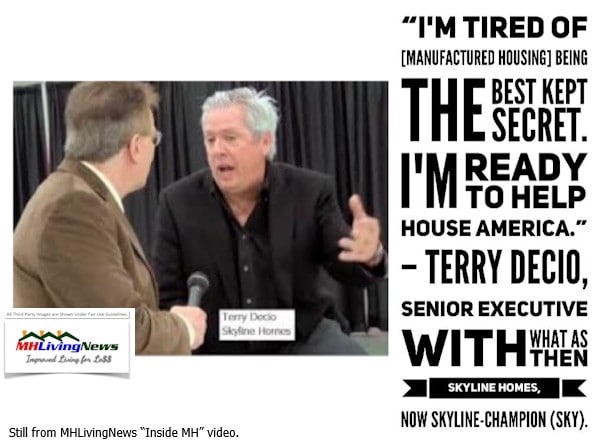
But one of several gems in the above is the reflection that “It took me years and years to unravel the sabotage I have found.” Schmitz and his colleagues state at various times in their varied reports on manufactured housing and other ‘sabotage monopoly’ tactics that their research is a work in progress. Those candid admission that they are not putting themselves forward as industry specific experts is to be applauded. That said, this writer, after decades in front-line MHVille experience, only slowly came to realize the truth about ‘sabotaging monopoly’ tactics.

That phrasing, ‘sabotage monopoly’ tactics is one of the 5-star takeaways from their Schmitz and his colleagues’ groundbreaking work.
Don’t miss today’s postscript.
As someone ponders the notion of sabotaging monopolies that Schmitz has been advancing in recent years strive to keep in mind that he and his research colleagues have asserted that this troubling issue exists in other aspects of the U.S. economy. With that “sabotaging monopoly” concept in mind, peruse the headlines for the week that was.
With no further adieu, with the above in mind from Schmitz’s presentation, dive into the reports for the week that was from 10.23 to 10.30.2022.
What’s New on MHLivingNews
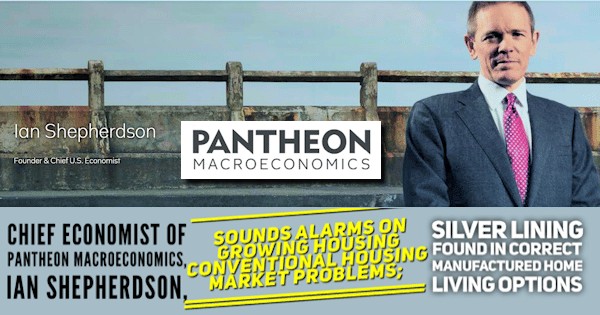
What’s New on the Masthead

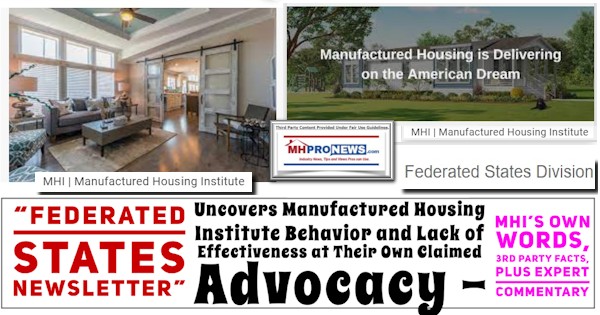
What’s New from Washington, D.C. from MHARR
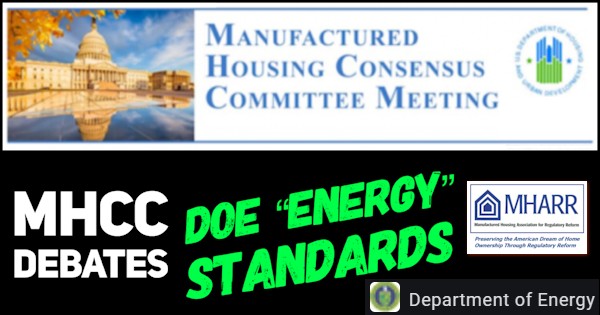
What’s New on the Daily Business News on MHProNews
Saturday 10.29.2022

Friday 10.28.2022

Thursday 10.27.2022
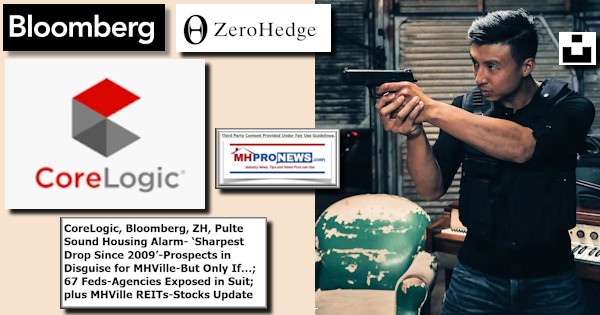
Wednesday 10.26.2022

Tuesday 10.25.2022
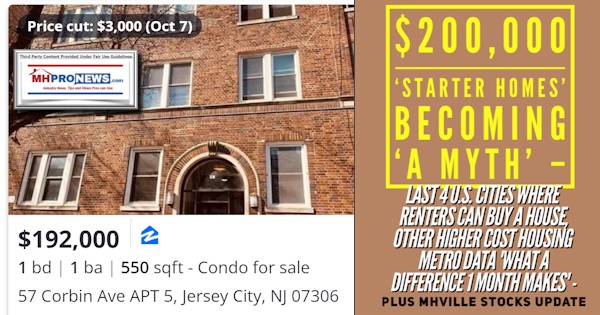
Monday 10.24.2022

Sunday 10.23.2022
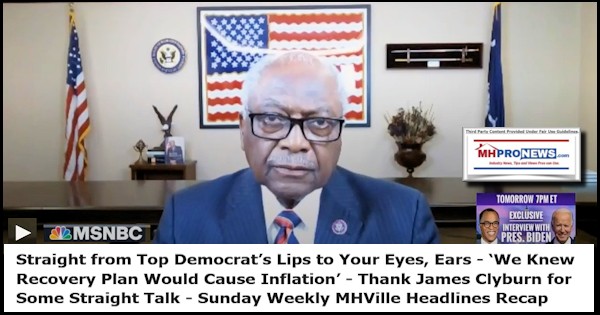
Postscript
To return to the thrust of the Schmitz thesis on why manufactured housing is essential for people with lower incomes and the related issues the economist raised, consider the following facts. “The median sales price of new houses sold – houses built for the home owner and then financed through a mortgage – in February 2022 was $400,600 and the average sales price was $511,000, according to U.S. Census Bureau figures. The average sales price of an existing home as of February 2022 was $357,300,” said Rocket Mortgage on 6.1.2022.
The most recent U.S. Census Bureau data for manufactured home prices are as follows.
| United States | |||
| Total1 | Single | Double | |
| 2022 | |||
| May | $124,900 | $85,800 | $159,200 |
Thus, the only kind of permeant home that millions of Americans can afford is a HUD Code manufactured home.
There are some terminology issues noted in the above and items that merit more detail or fine tuning. But in fairness, the same point that Samuel “Sam” Strommen from Knudson Law raised with MHProNews/MHLivingNews likely applies here. Namely, there is dearth of information on several key issues online, save on a handful of platforms, two of which are our own. MHARR has routinely reliable information, including years of month-by-month production and shipping data that MHI used to provide to the public.
- But MHI in recent years oddly hides official monthly production/shipment data behind a members’ only login.
- Even loyal MHI member, Sun Communities’ (SUI) Gary Shiffman admitted that there is a lack of a reliable source of information.
- The NAR’s Scholastica “Gay” Cororaton initial report on manufactured housing needed several revisions, despite the fact that MHI was apparently involved at some level with that research. That said, after making each and every revision requested, Cororaton pulled the originally published item, replace it with the correct research and provided credits to MHARR and this writer for MHProNews for offering those corrections.
- The largest known repository of third-party research on manufactured housing today is found on MHProNews and MHLivingNews.
- The point is that outsiders looking in face a challenge getting accurate information about manufactured housing, if they don’t spend serious time on our websites. That’s not a pat on our own back, it was a statement made in a footnote by Strommen in his seminal research. That said, Strommen’s report needed tweaks too.
- One takeaway is that the problem that fits Schmitz and his colleagues’ thesis of sabotaging monopoly. A fascinating addition to this most recent iteration of Schmitz’s work is this sentance: “This leads to whole new set of monopolies, those in manufactured housing industry itself.”
As with almost anyone who dares raise their head above the crowd, it is no surprise that there is published criticism of Schmitz’s work. It will be noted for now that beyond terminology, the bulk of the insights provided by Schmitz and his colleagues stand up to scrutiny and are in line with facts and known evidence. His work has been cited in testimony provided to the U.S. Senate for arguably good reasons. While refinement and additional details are warranted, the overall value of he and his colleagues’ efforts are to be applauded. Why? Because the problem of monopolization or “consolidation” – as the Biden White House and Donald Trump Jr. have referred to importance of the topic. Those examples and others that might be offered ought to be enough reason to take the topic seriously. If monopolization/consolidation are enduring American problems – and there is growing agreement across the left-right divide that recognize that monopoly power is a serious and festering issue – then obviously understanding the mechanisms that contribute to consolidation occurring is logically necessary.
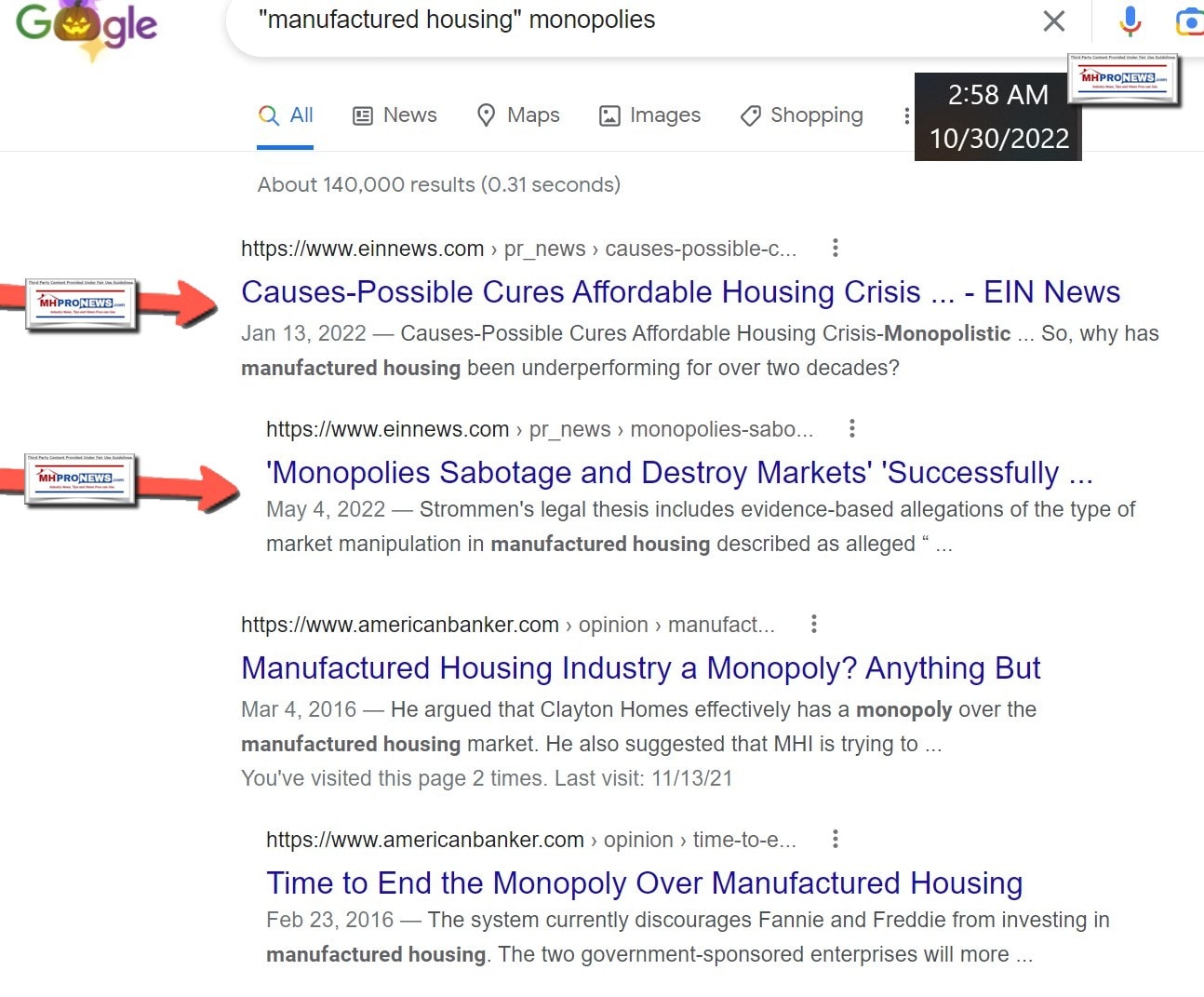
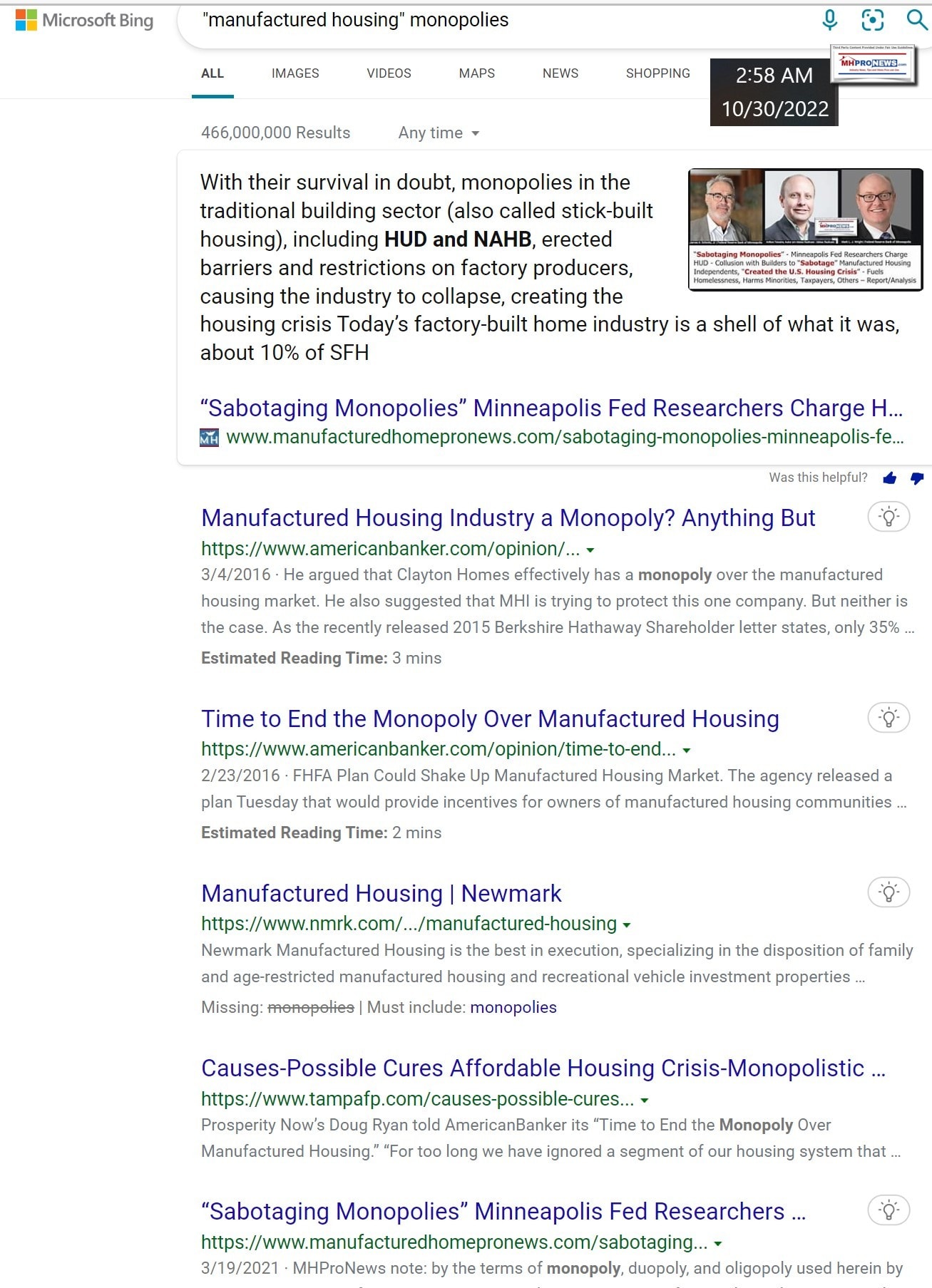
A higher-ranking article found via top search engines produced that critique of Schmitz’s work. But when carefully unpacked, that article itself has several apparent factual, lack of historic context on key points, and thus logical errors. That critical article may become a topic for a future fact check on MHProNews/MHLivingNews. It is arguably potentially valuable to Schmitz, so long as the ‘hits’ leveled are addressed and debunked. Public debate sparks interests.
Thus, the revival of thesis of ‘sabotaging monopoly’ tactics is thus a significant contribution by Schmitz and his colleagues to the body of thoughtful work that has been produced about the benefits and challenges that face modern manufactured housing. When serious researchers and seekers of truth are studying these issues, it is always prudent to be mindful about using the ancient and wise principle of separating the wheat from the chaff. There is apparently far more wheat than chaff in the presentation above and the others that have been part of the ongoing series of research that Schmitz is involved in. ###
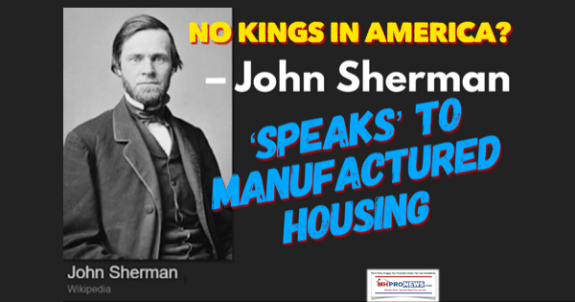
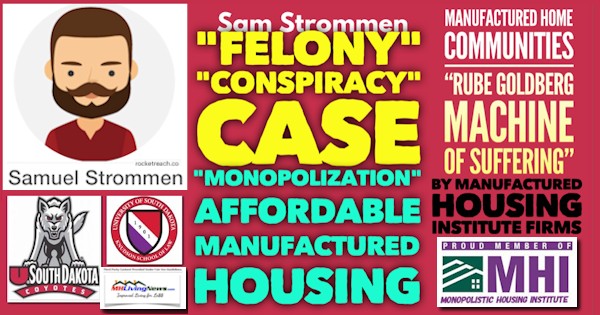



Again, our thanks to free email subscribers and all readers like you, our tipsters/sources, sponsors and God for making and keeping us the runaway number one source for authentic “News through the lens of manufactured homes and factory-built housing” © where “We Provide, You Decide.” © ## (Affordable housing, manufactured homes, reports, fact-checks, analysis, and commentary. Third-party images or content are provided under fair use guidelines for media.) (See Related Reports, further below. Text/image boxes often are hot-linked to other reports that can be access by clicking on them.)

By L.A. “Tony” Kovach – for MHProNews.com.
Tony earned a journalism scholarship and earned numerous awards in history and in manufactured housing.
For example, he earned the prestigious Lottinville Award in history from the University of Oklahoma, where he studied history and business management. He’s a managing member and co-founder of LifeStyle Factory Homes, LLC, the parent company to MHProNews, and MHLivingNews.com.
This article reflects the LLC’s and/or the writer’s position, and may or may not reflect the views of sponsors or supporters.
Connect on LinkedIn: http://www.linkedin.com/in/latonykovach
Related References:
The text/image boxes below are linked to other reports, which can be accessed by clicking on them.

























